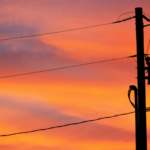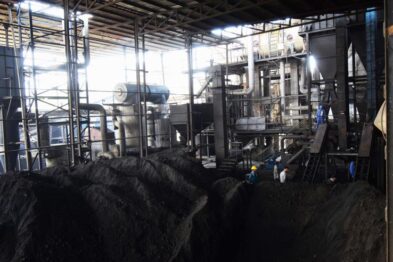People Need Clean Air. To Get It, They Need Clear Data.
By Preeti Jha
The sky glowed a feverish orange when the flames in the mountain forests of Chiang Mai, Thailand, were at their worst in March 2019. Thick plumes of smoke seeped into Achim Haug’s house. Eyes stinging and throats sore, he, his wife and their two children moved into one room, turned on their three air purifiers and sealed the wooden window frames with yellow painter’s tape.
Like many parents in Chiang Mai, Mr. Haug checked public air pollution websites hourly during the most polluted days. The main source back then — aqicn.org, a platform that mostly used sensor data from the Thai government — showed that the city’s air quality index was frequently hovering above 300, a level many authorities consider hazardous.
But Mr. Haug was troubled by not knowing the quality of the air flooding into his home. “I felt pretty helpless about the health of my family,” he said.
The World Health Organization says that air pollution is the biggest global environmental risk factor to human health. The most deadly air pollutant, PM 2.5, comprises particles tiny enough to penetrate the lungs and the bloodstream, contributing to seven million premature deaths each year. Multiple studies have shown that these particles also put people at greater risk of conditions such as lung cancer, stroke and heart disease.
Global data asymmetry is a major challenge: Some of the most polluted countries in Africa have far less data than some of the cleanest in Europe. But advances in low-cost sensor technology have widened access to air pollution data, putting new tools into the hands of everyday citizens hungry to understand and improve the air quality where they live.
A former project manager at the German engineering firm Siemens and a lifelong electronics hobbyist, Mr. Haug decided to build his own sensor with a microprocessor and a few cables from his toolbox. Costing around $50 to assemble, his sensor was a fraction of the $200 to $600 that a commercial monitor costs or the $30,000 sensors governments use. He was shocked to find that the PM 2.5 reading in his home was about five times the W.H.O.’s 24-hour guidelines — even with air purifiers on.
Over the next few weeks, he refined the design, adding a sensor for carbon dioxide levels, and started testing it at his children’s school. His devices fed into a real-time dashboard that compared pollutant levels, giving worried parents information they could use to decide, for example, whether to keep children home when pollution levels were high. “Just by communicating the data, it created such a positive atmosphere,” he said. “It was the first step to tackle the problem.”
What began as a local solution to a seasonal problem in Chiang Mai could, he thought, be expanded. Within a few months, Mr. Haug founded AirGradient, a company that designs open-source air quality monitors and advocates open data, offering instructions online for people who want to build their own sensors. They also sell ready-to-use indoor and outdoor monitors. Since its founding, AirGradient has sold nearly 50,000 monitors in at least 85 countries, Mr. Haug said, and 1,800 users share their outdoor data on its website.
In March, the Trump administration ended an air quality program that had long been influential in some 80 U.S. Embassies and Consulates. In 2008, the U.S. Embassy’s hourly posts of air quality readings from its monitor in Beijing were viewed by many people as a catalyst for the large citizen’s movement in China that pressured the government to take action against pollution.
Until this year, the only public air quality monitor in Laos, which borders Thailand, was powered by the U.S. Embassy. AirGradient stepped in days before it was turned off to install monitors in schools across the country in partnership with UNICEF, helping teachers decide when the air was too hazardous to hold classes. It later offered to send free monitors to other cities where U.S. sensors had been switched off.
“There are certain breaking points in history that open up new opportunities,” Mr. Haug said. “People are ready for change. And this is a really good opportunity to see where we can get to as a completely community-driven initiative.”
On a rooftop terrace on a quiet street in northwest Delhi, India, is the nerve center of another mission to track air quality. A clutch of printed circuit boards and black wires, climbing up the wall like vines, offers a glimpse into Rohit Bansal’s quest to quantify pollution in India.
The quest began in Beijing, where Mr. Bansal moved in 2008 to study Mandarin, attracted by the work ethic and rising tech scene. But his studies were interrupted by severe bouts of sinusitis every few months, which a specialist connected to the dust in Beijing’s air. For the first time, he began paying attention to air quality.
Mr. Bansal bought a low-cost portable air monitor, models of which were becoming more available during the push for pollution regulation in China. He was struck by the absence of a similar movement in India, despite its growing air quality problems. On his return to Delhi, he brought along his monitor. “The readings were even higher,” he said.
Mr. Bansal wanted to show Indians what they were breathing. He spent the next few years researching sensors, teaming up with a printed circuit board maker in the north-central Chinese city of Baoji to test prototypes. His first sensor rests on that terrace wall: a small cream-colored box with an illustration of a smiling young child and the tagline “Know what you breathe.” That first prototype didn’t work, but after several attempts, a new model was ready for rollout.
Mr. Bansal founded a start-up, Prana Air, that sells air monitors. He gave free sensors to 800 people across India who fed data into aqi.in, the website he started for sharing pollution readings. The site draws about 100,000 daily visitors on average, Mr. Bansal said, and can spike to a million during smog season in New Delhi, the most polluted capital in the world, according to the Swiss air quality company IQAir.
“Air pollution is invisible,” Mr. Bansal said. “You need to put numbers to it. That was the whole idea of aqi.in, to make the numbers visible.”
But some authorities are skeptical. In March 2022, the Central Pollution Control Board in India issued a memo warning against publicly sharing data from low-cost sensors, questioning their accuracy and reliability. Mr. Bansal has received multiple phone calls and letters from officials urging him to take the data on his website down.
In the United States, recent laws in Louisiana and Kentucky prevent people using data from low-cost sensors as evidence of violations of clean air laws, requiring them to use more expensive, federally approved equipment to ensure “access to accurate air quality information.” Community groups near the Mississippi River’s notoriously industrialized “Cancer Alley” region responded with a lawsuit in May, arguing that Louisiana’s rule kept them from holding the government and corporations to account.
Air quality experts say the data from low-cost sensors is not as accurate as that derived from the more expensive ones used by governments. Some low-cost sensors are more rigorously tested than others, and the quality of the data can vary. But studies have shown that the readings from low-cost sensors can be roughly as accurate as government machines when they’re calibrated against reference-grade monitors. While neither Britain nor the European Commission treats low-cost sensors as regulatory tools, both support their use as a way to make monitoring air quality more accessible and to raise public awareness.
Data from low-cost sensors used by the Breathe London Network, a monitoring project run by a team at Imperial College London, has helped identify major pollution hot spots in the U.K. capital. That data also supported Mayor Sadiq Khan’s decision to expand London’s Ultra Low Emission Zone, a 2019 initiative to reduce air pollution by charging high-pollution vehicles to enter the city center. Mr. Khan expanded the zone four years later to cover all of London, alongside modeling showing sharply reduced pollution levels. (The reporter of this article helped host a monitor at her child’s school as part of the Breathe London Community Programme.)
Thirteen cities — including Jakarta in Indonesia, Accra in Ghana and Rio de Janeiro in Brazil — have adopted the Breathe London monitoring model in recent years, introducing lower-cost sensors to expand access to air quality data for local communities, in collaboration with city governments.
At a small lab and warehouse in northwest Delhi, Mr. Bansal uses a sealed-glass calibration chamber to benchmark his sensors against a reference monitor. The Indian government should incorporate low-cost sensors the way other cities are doing, he said, to focus efforts on the most polluted places.
But data alone is not enough to improve air quality, said Tanushree Ganguly, the Delhi-based director of the University of Chicago’s Air Quality Life Index program. The leap in monitoring across the world hasn’t led to “commensurate declines in pollution levels,” she said.
Ms. Ganguly’s work centers on making A.Q.I. data tangible, showing how air pollution affects life expectancy. The program’s latest report estimated that air pollution in Delhi shortened the lives of residents by around eight years. The index’s figures have become a popular way of talking about air quality and are cited by Indian politicians lobbying for change as well as by local campaigners.
“We have to frame it in a way that is locally relevant,” Ms. Ganguly said. “Unfortunately some of these large macro numbers that we’ve been using so far do not really pass this personal, emotional check.”















